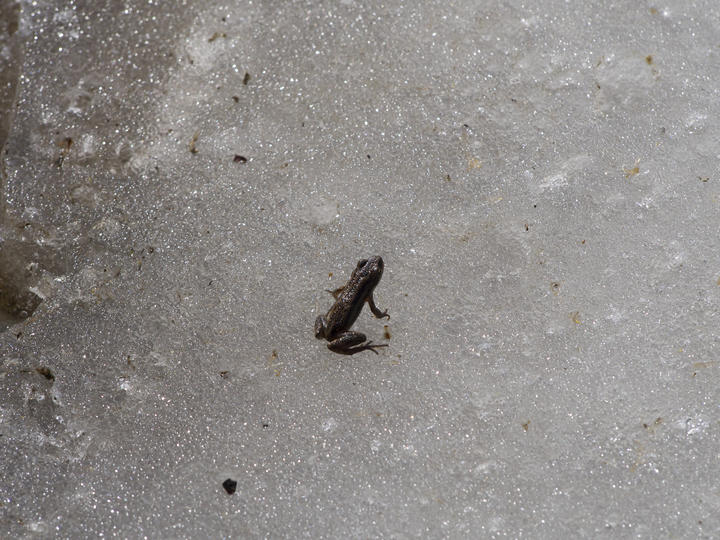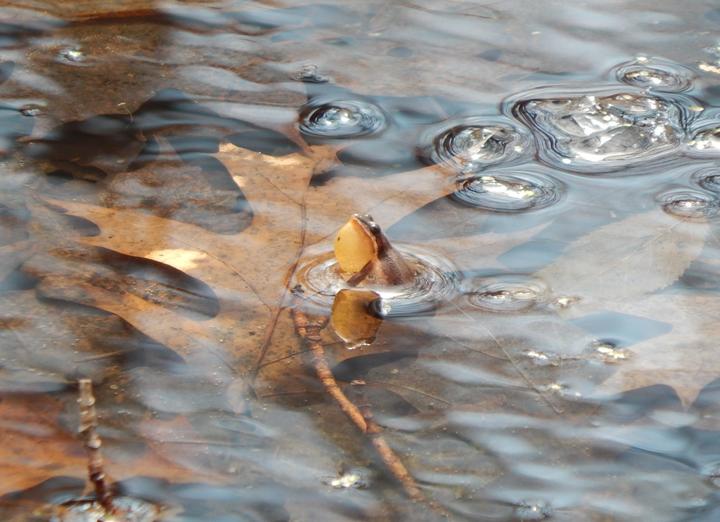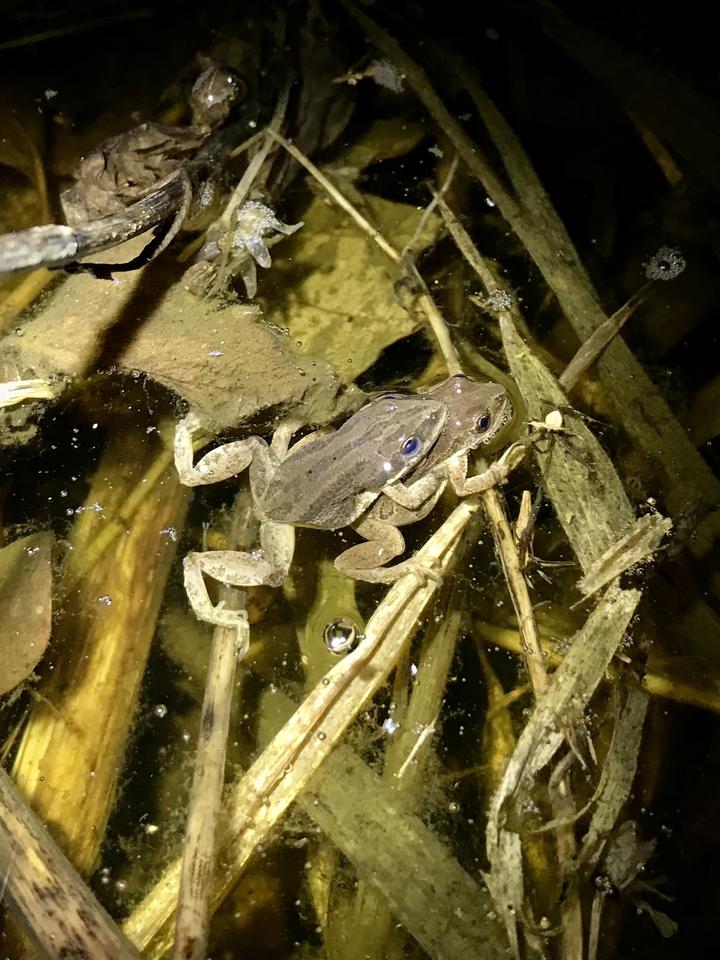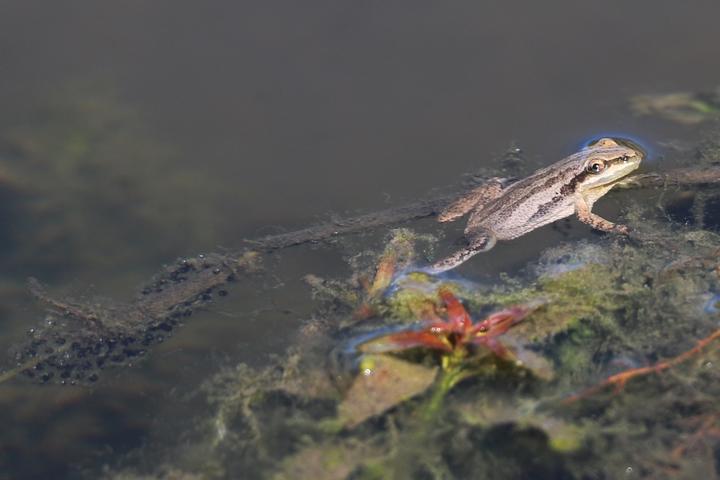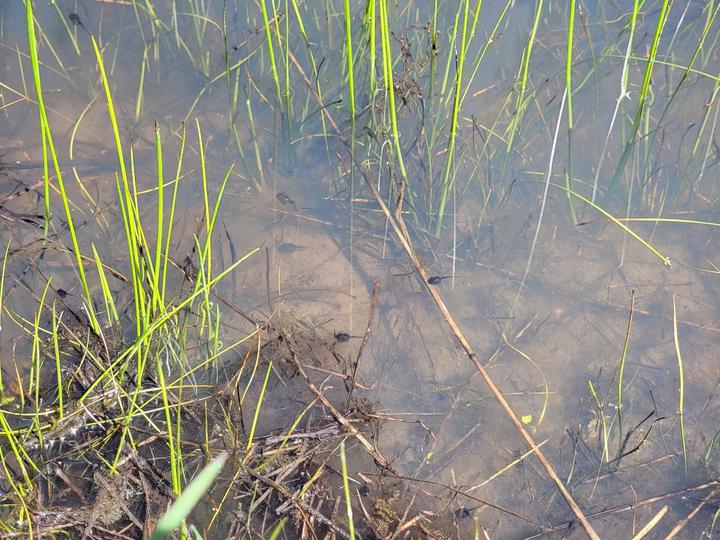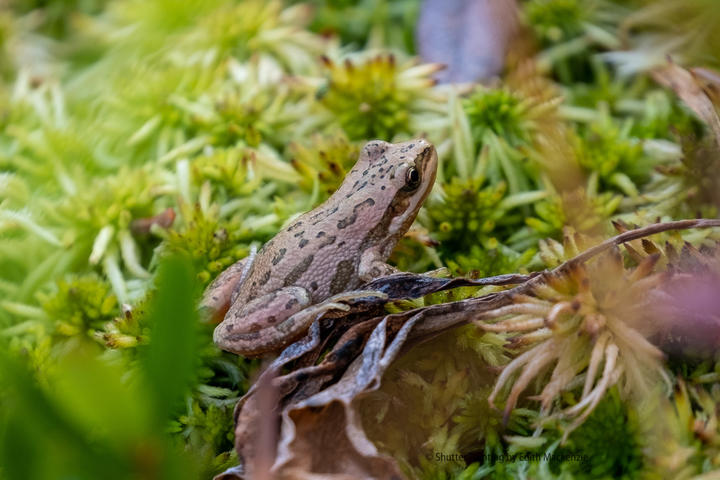More names for this animal
Anishinaabemowin: Omakakii (frog)
Dakota: Hnaṡka (frog)
The Dakota and Anishinaabe were among the earliest people to name Minnesota’s plants and animals, as well as to understand them in relation to Minnesota’s climate and seasons. Those original names are still in use, and several are included on the Season Watch website.
Latin (or scientific name): Pseudacris maculata
The scientific community has a convention of assigning agreed-upon Latin names to every kind of organism. Using scientific names helps people communicate confidently about the same organism and organize lifeforms based on how closely related they are.
Page contents
About the boreal chorus frog
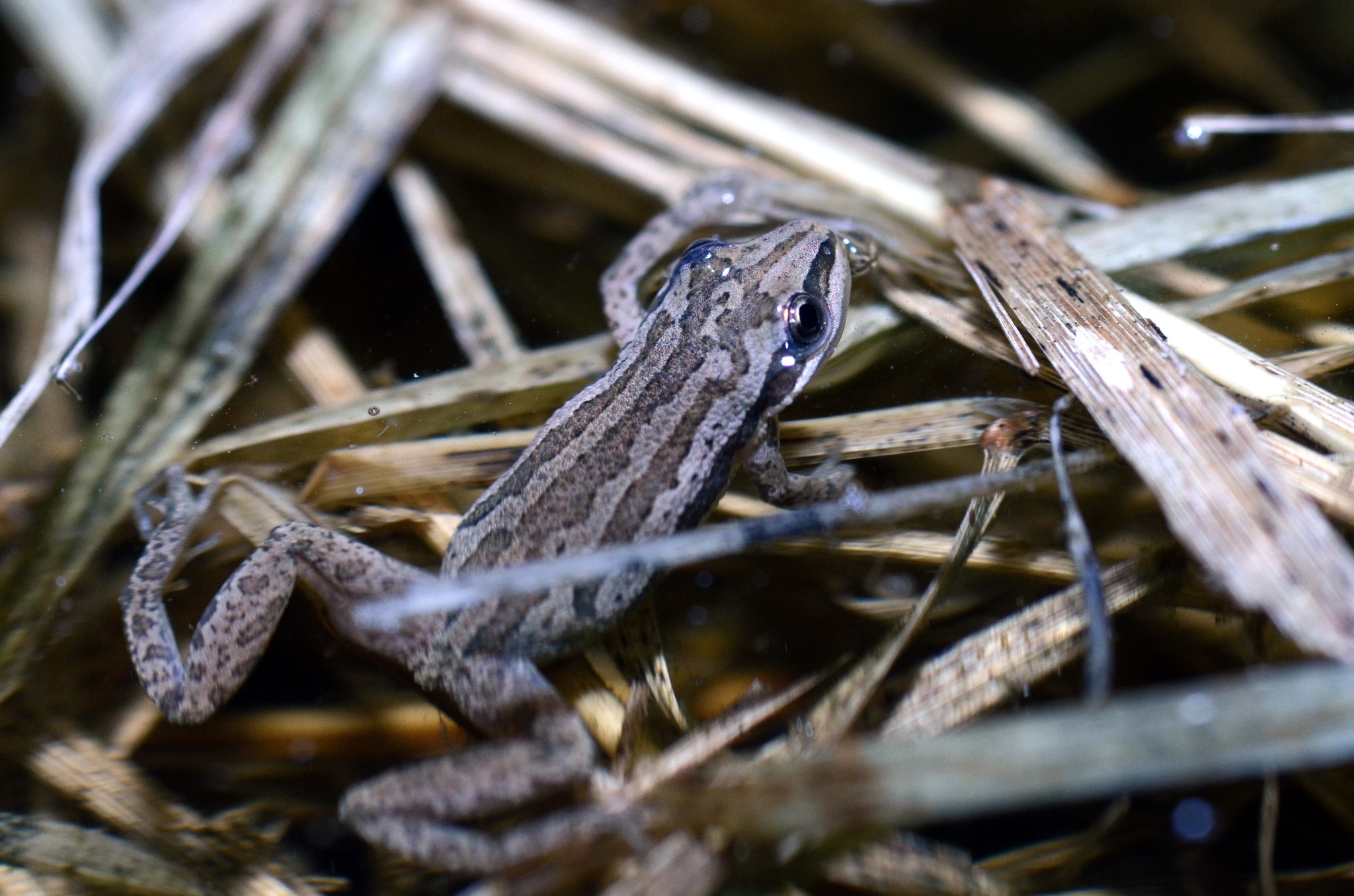
April 12, 2014, Anoka County, Minnesota
Photo © squamatologist, some rights reserved (CC-BY-NC-ND)
iNaturalist observation
About the boreal chorus frog
- Boreal chorus frogs can range in color from tan to shades of gray or even red. Three dark stripes run from its head down its back, and a dark line runs through each eye.
- Boreal chorus frogs begin breeding in March and April. Listen for their call, which is a "cree" sound similar to running a fingernail across a comb.
- They are found throughout Minnesota, in open wetland habitat, fields near trees, and also cities.
- The boreal chorus frog is food for various animals such as raccoons, wading birds, fish, and snakes.
- Fun fact: At just ¾ to 1½ inches in length, the boreal chorus frog is Minnesota's smallest frog.
Visual guide to phenology
Watch for boreal chorus frogs' presence (or absence), abundance, and behaviors at different times of year. Also, pay attention to when young-of-year appear and develop.
Note to observers
This page explains general clues to watch and listen for when observing boreal chorus frog phenology. However, this page does not explain how to identify this animal or collect data in a standardized way.
- For help with identification, see a field guide or the Minnesota DNR's webpages on reptiles and amphibians.
- For guidance on collecting data, see Nature’s Notebook.
April 21, 2019 in Scott County, Minnesota
Recording by tonycarlile (https://freesound.org/s/592928/) CC BY 4.0
April 30, 2021, Wright County, Minnesota
Recording © dianen5, some rights reserved (CC-BY-NC)
iNaturalist observation
Graphs and historical data
Note: The Orientation Center provides a map, as well as information on reading graphs; interpreting summary statistics, who collected the data and how; and how to download datasets for independent exploration.
First heard
- Earliest: March 22 (occurred in 2012)
- Average: April 13
- Latest: April 28 (occurred in 2013)
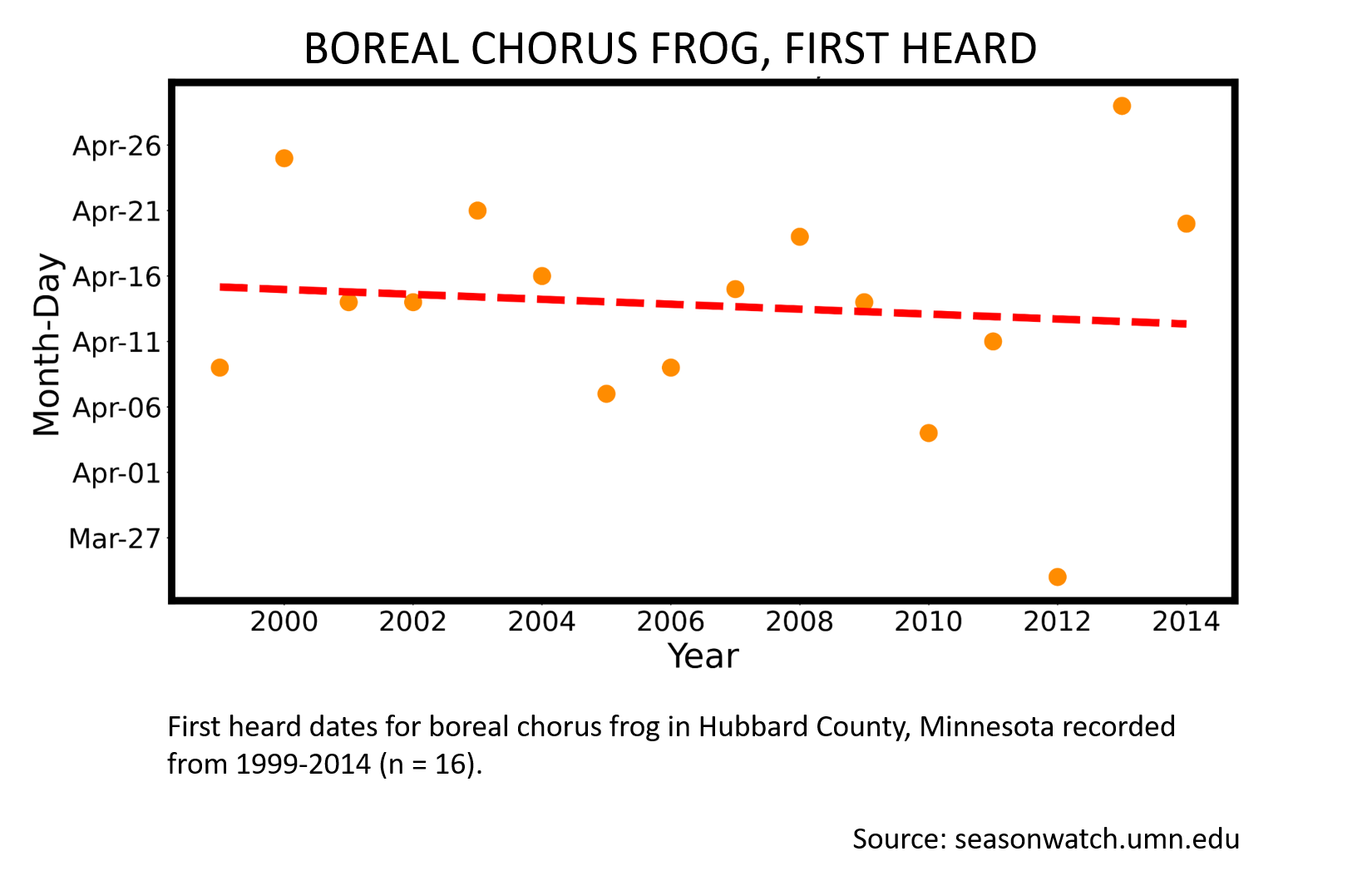
First heard
- Earliest: March 21 (occurred in 2012)
- Average: April 13
- Latest: April 30 (occurred in 2013)
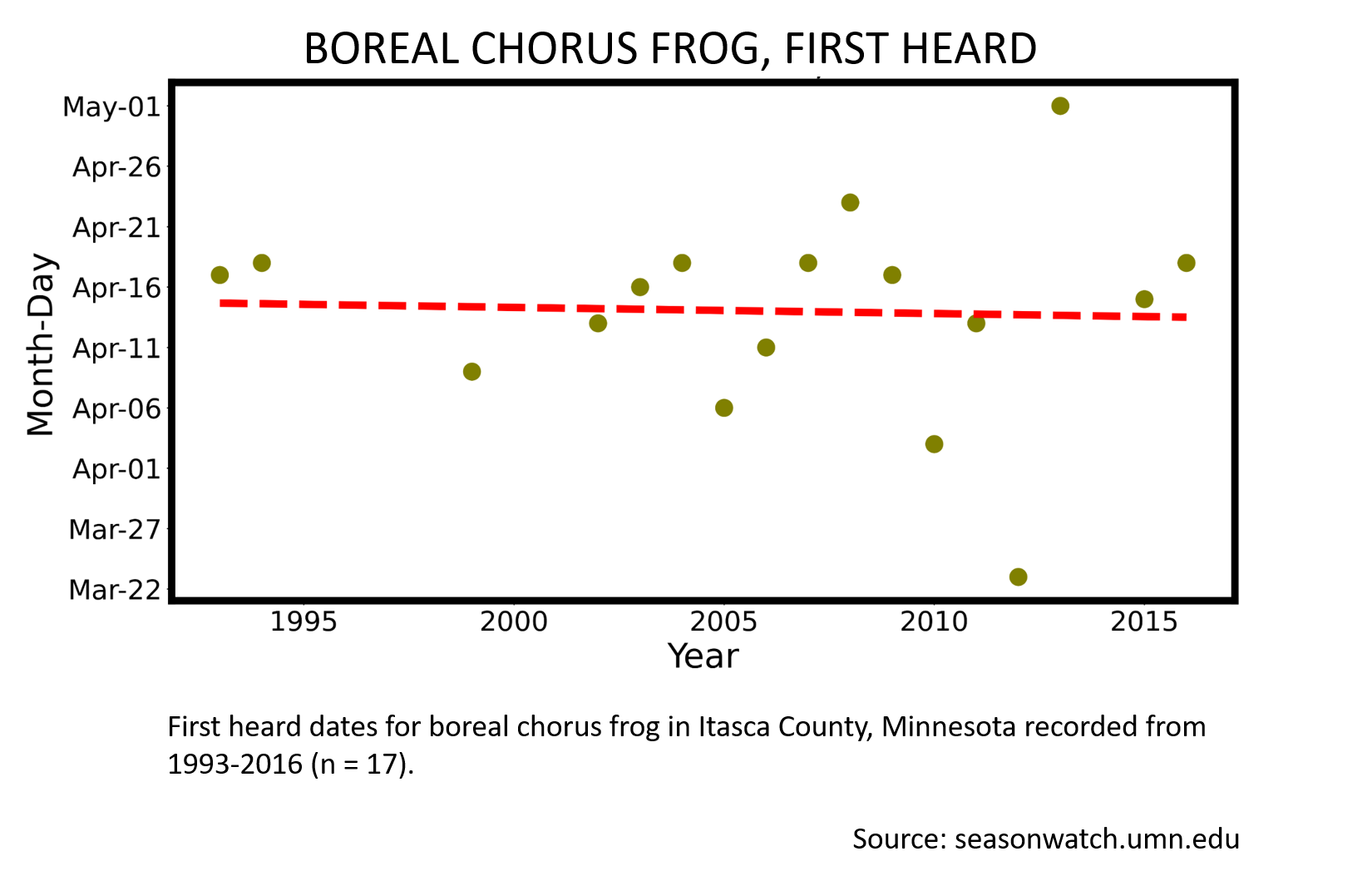
More resources
Keep exploring Season Watch
Keep exploring Season Watch
Co-author: Jayme Hogan, Minnesota Master Naturalist
